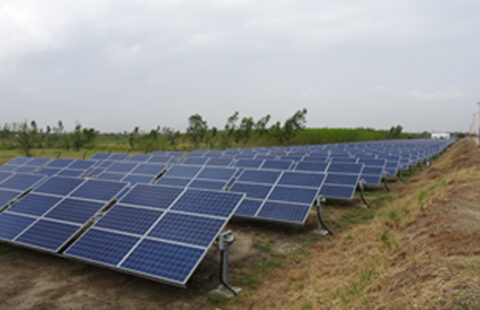
Commercial Solar Energy: Tech, Applications, and Incentives
As businesses worldwide shift towards more sustainable and cost-effective energy solutions, commercial solar energy is gaining significant traction. Harnessing solar power for commercial purposes not only reduces operating costs but also aligns with global efforts to combat climate change. In this blog, we’ll explore the latest solar technologies for businesses, their applications, and the financial incentives available to make solar energy an attractive investment for commercial ventures.
Solar Technology for Commercial Use
Modern solar technology is more efficient and accessible than ever before, offering businesses a range of options to meet their energy needs. Here are some of the key technologies used in commercial solar energy systems:
1. Solar Photovoltaic (PV) Panels
Solar PV panels convert sunlight directly into electricity. For commercial setups, high-efficiency solar panels are used to maximize energy production, even in limited space. These panels can be installed on rooftops, parking lots, or open land to generate clean, renewable energy.
2. Solar Inverters
Solar inverters are essential for converting the direct current (DC) produced by solar panels into alternating current (AC) that can be used by commercial buildings. Advanced inverters also come with monitoring systems, allowing businesses to track their energy production and consumption in real time.
3. Solar Batteries and Energy Storage
Energy storage is a key component of commercial solar systems. Solar batteries store excess energy generated during peak sunlight hours, which can be used when the sun isn’t shining or during times of high energy demand. This reduces dependence on the grid and helps businesses maintain energy security.
4. Solar Tracking Systems
To optimize energy output, many commercial solar installations use solar tracking systems. These systems follow the sun’s movement throughout the day, ensuring that panels are always positioned to capture the maximum amount of sunlight.
Applications of Commercial Solar Energy
Solar energy offers numerous applications for businesses across various industries. Here’s how commercial solar energy is being utilized:
1. Reducing Operating Costs
By installing solar energy systems, businesses can significantly reduce their electricity bills. With net metering options, companies can even sell excess energy back to the grid, further lowering operational expenses.
2. Powering Large Facilities
Commercial solar systems are ideal for powering large facilities such as warehouses, factories, and data centers. Solar energy helps meet the high energy demands of these facilities, reducing reliance on traditional energy sources.
3. Sustainable Business Practices
Many businesses are adopting solar energy as part of their sustainability strategies. Solar installations help companies reduce their carbon footprints, meet environmental goals, and demonstrate corporate responsibility to customers and stakeholders.
4. Solar-Powered EV Charging Stations
With the rise of electric vehicles (EVs), businesses are incorporating solar energy into EV charging stations. By using solar power to charge fleets and customer vehicles, companies are further promoting green energy adoption and reducing carbon emissions.
Incentives for Commercial Solar Energy
Governments around the world are offering various incentives to encourage businesses to invest in solar energy. These incentives help offset installation costs and improve the return on investment (ROI) for commercial solar projects:
1. Tax Credits and Rebates
Many countries offer tax credits and rebates for businesses that install solar energy systems. For example, the U.S. federal Investment Tax Credit (ITC) allows businesses to deduct a percentage of the installation cost from their federal taxes.
2. Accelerated Depreciation (MACRS)
In several regions, including the U.S., commercial solar systems qualify for accelerated depreciation under the Modified Accelerated Cost Recovery System (MACRS). This allows businesses to recover the costs of solar equipment over a short period, reducing their tax burden.
3. Net Metering
Net metering programs allow businesses to receive credits for the excess electricity they produce and feed back into the grid. These credits can be applied to future energy bills, creating additional savings for commercial solar users.
4. Grants and Loan Programs
Various government and non-governmental organizations offer grants and low-interest loans to help businesses finance solar energy projects. These programs make it easier for companies to adopt solar energy and realize long-term savings.
Conclusion
Commercial solar energy is a powerful tool for businesses looking to reduce costs, increase sustainability, and take advantage of available incentives. With advancements in solar technology and growing government support, the future of solar energy in the commercial sector is brighter than ever. By making the switch to solar, businesses not only contribute to a cleaner environment but also strengthen their bottom line through energy savings and tax benefits.


